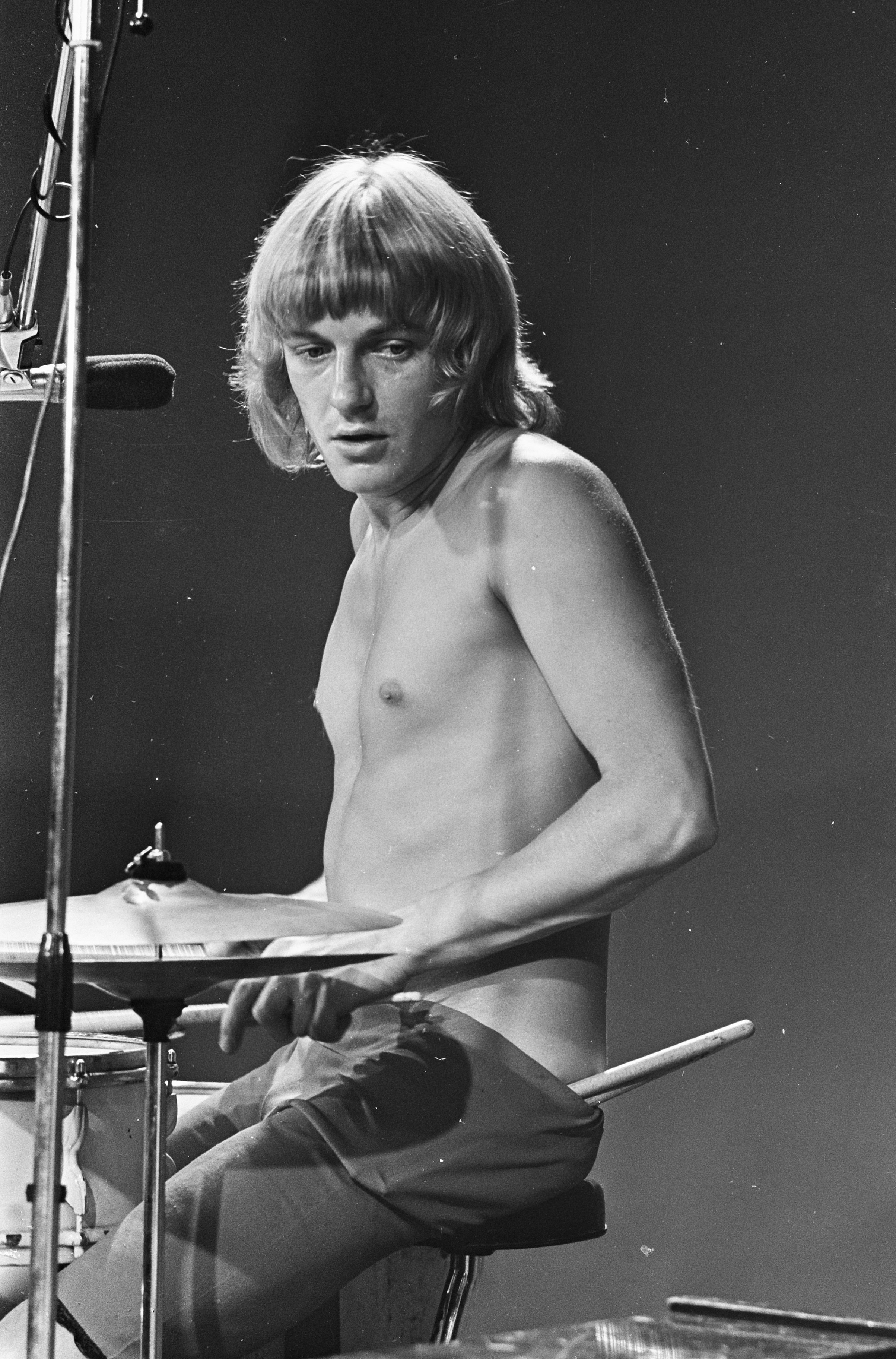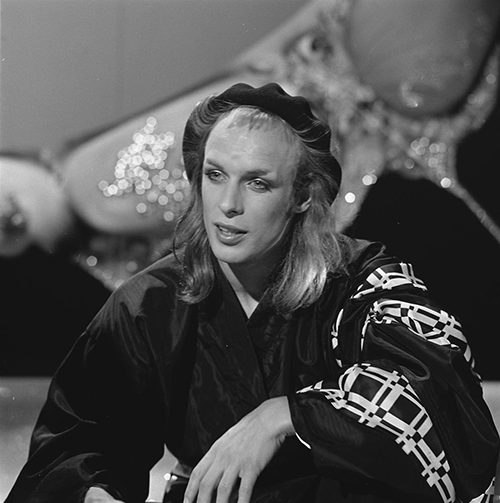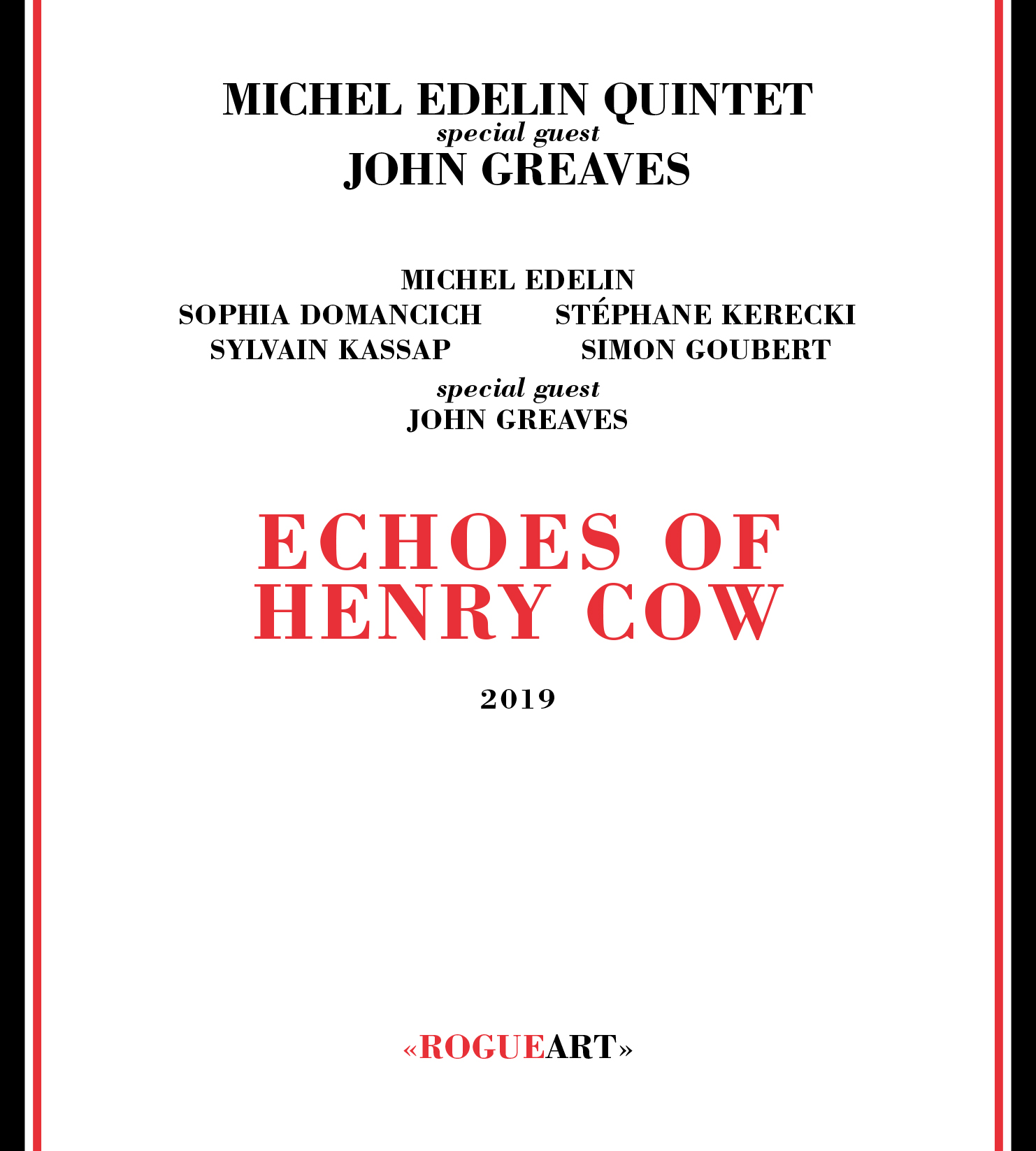|
Ruth Is Stranger Than Richard
''Ruth Is Stranger Than Richard'' is the third solo album by Robert Wyatt. Background The follow-up to '' Rock Bottom'', for which Wyatt had written all of the music and lyrics, ''Ruth...'' consisted of Wyatt's adaptations and arrangements of other people's music (either friends – Phil Manzanera, Fred Frith, Mongezi Feza, former Wilde Flowers bandmate Brian Hopper – or influences – Charlie Haden) with Wyatt adding his own lyrics in much the same way as he had done on Matching Mole's Little Red Record. Apart from "Sonia", recorded for the shelved "Yesterday Man" single in October 1974 (again with Nick Mason as producer), the entire album was recorded and mixed at Virgin's The Manor Studio with Wyatt himself handling production duties. Much of the album features Wyatt (on lead vocals and keyboards) backed by a "band" consisting of bassist Bill MacCormick, drummer Laurie Allan and saxophonists George Khan and Gary Windo, with Brian Eno adding his own idiosyncratic "anti-jazz" ... [...More Info...] [...Related Items...] OR: [Wikipedia] [Google] [Baidu] |
Robert Wyatt
Robert Wyatt (born Robert Wyatt-Ellidge, 28 January 1945) is a retired English musician. A founding member of the influential Canterbury scene bands Soft Machine and Matching Mole, he was initially a kit drummer and singer before becoming paraplegic following an accidental fall from a window in 1973, which led him to abandon band work, explore other instruments, and begin a forty-year solo career. A key player during the formative years of British jazz fusion, psychedelia and progressive rock, Wyatt's own work became increasingly interpretative, collaborative and politicised from the mid-1970s onwards. His solo music has covered a particularly individual musical terrain ranging from covers of pop singles to shifting, amorphous song collections drawing on elements of jazz, folk and nursery rhyme. Wyatt retired from his music career in 2014, stating "there is a pride in topping I don't want he musicto go off." He is married to English painter and songwriter Alfreda Benge. Earl ... [...More Info...] [...Related Items...] OR: [Wikipedia] [Google] [Baidu] |
Brian Eno
Brian Peter George St John le Baptiste de la Salle Eno (; born Brian Peter George Eno, 15 May 1948) is a British musician, composer, record producer and visual artist best known for his contributions to ambient music and work in rock, pop and electronica. A self-described "non-musician", Eno has helped introduce unconventional concepts and approaches to contemporary music. He has been described as one of popular music's most influential and innovative figures. Born in Suffolk, Eno studied painting and experimental music at the art school of Ipswich Civic College in the mid 1960s, and then at Winchester School of Art. He joined glam rock group Roxy Music as its synthesiser player in 1971, recording two albums with the group before departing in 1973. Eno then released a number of solo pop albums beginning with ''Here Come the Warm Jets'' (1974) and, also in the mid-1970s, began exploring a minimalist direction on influential recordings such as '' Discreet Music'' (1975) and ... [...More Info...] [...Related Items...] OR: [Wikipedia] [Google] [Baidu] |
Alfreda Benge
Alfreda Benge is a lyricist and illustrator. She was born in 1940 in Austria to a Polish mother, and came to England in 1947. Her stepfather, Ronald Benge, was a prominent librarian who established library schools in developing countries. She has been married to musician Robert Wyatt since 1974.Andy Gregory ''International Who's Who in Popular Music'', Routledge, 2002, She has contributed lyrics to many of his compositions, and has written lyrics for French musician/producer Bertrand Burgalat, and for Brazilian singer Monica Vasconcelos. Benge studied painting at Camberwell Art School, graphics at the London School of Printing, film at the RCA, worked in film, and served as an assistant to the editor Graeme Clifford for Nicolas Roeg's ''Don't Look Now'' (1973). She has provided cover artwork for all Wyatt's solo albums since 1974, as well as for albums by other musicians including ''Gravity'' by Fred Frith, ''Alice'' by Klimperei and ''Spanish Dance Troupe'' by Gorky's Zygotic Mync ... [...More Info...] [...Related Items...] OR: [Wikipedia] [Google] [Baidu] |
John Greaves (musician)
John Greaves (born 23 February 1950) is a British bass guitarist and composer who was a member of Henry Cow and has collaborated with Peter Blegvad. He was also a member of progressive rock band National Health and jazz-rock supergroup Soft Heap, and has recorded several solo albums, including ''Accident'' (1982), ''Parrot Fashions'' (1984), ''The Caretaker'' (2001) and ''Greaves Verlaine'' (2008). Biography Greaves was born in Prestatyn and grew up in Wrexham in northeast Wales. At the age of 12, he was given a bass guitar by his father, a Welsh dancehall bandleader, and within six months, he was playing in his father's orchestra. He continued playing in the orchestra for four years, during which time its varied musical styles gave Greaves valuable musician and arranger skills. He was educated at Grove Park Grammar School in Wrexham from 1961 to 1968. In 1968, Greaves entered Pembroke College, Cambridge to study English, and at Cambridge, he met members of the burgeoning Eng ... [...More Info...] [...Related Items...] OR: [Wikipedia] [Google] [Baidu] |
Trumpet
The trumpet is a brass instrument commonly used in classical and jazz ensembles. The trumpet group ranges from the piccolo trumpet—with the highest register in the brass family—to the bass trumpet, pitched one octave below the standard B or C trumpet. Trumpet-like instruments have historically been used as signaling devices in battle or hunting, with examples dating back to at least 1500 BC. They began to be used as musical instruments only in the late 14th or early 15th century. Trumpets are used in art music styles, for instance in orchestras, concert bands, and jazz ensembles, as well as in popular music. They are played by blowing air through nearly-closed lips (called the player's embouchure), producing a "buzzing" sound that starts a standing wave vibration in the air column inside the instrument. Since the late 15th century, trumpets have primarily been constructed of brass tubing, usually bent twice into a rounded rectangular shape. There are many distinc ... [...More Info...] [...Related Items...] OR: [Wikipedia] [Google] [Baidu] |
Baritone Saxophone
The baritone saxophone is a member of the saxophone family of instruments, larger (and lower-pitched) than the tenor saxophone, but smaller (and higher-pitched) than the bass. It is the lowest-pitched saxophone in common use - the bass, contrabass and subcontrabass saxophones are relatively uncommon. Like all saxophones, it is a single-reed instrument. It is commonly used in concert bands, chamber music, military bands, big bands, and jazz combos. It can also be found in other ensembles such as rock bands and marching bands. Modern baritone saxophones are pitched in E. History The baritone saxophone was created in 1846 by the Belgian instrument maker Adolphe Sax as one of a family of 14 instruments. Sax believed these instruments would provide a useful tonal link between the woodwinds and brasses. The family was divided into two groups of seven saxophones each, from the soprano to the contrabass. Though a design for an F baritone saxophone is included in the C and F family ... [...More Info...] [...Related Items...] OR: [Wikipedia] [Google] [Baidu] |
Alto Saxophone
The alto saxophone is a member of the saxophone family of woodwind instruments. Saxophones were invented by Belgian instrument designer Adolphe Sax in the 1840s and patented in 1846. The alto saxophone is pitched in E, smaller than the B tenor but larger than the B soprano. It is the most common saxophone and is used in popular music, concert bands, chamber music, solo repertoire, military bands, marching bands, pep bands, and jazz (such as big bands, jazz combos, swing music). The alto saxophone had a prominent role in the development of jazz. Influential jazz musicians who made significant contributions include Don Redman, Jimmy Dorsey, Johnny Hodges, Benny Carter, Charlie Parker, Sonny Stitt, Lee Konitz, Jackie McLean, Phil Woods, Art Pepper, Paul Desmond, and Cannonball Adderley. Although the role of the alto saxophone in classical music has been limited, influential performers include Marcel Mule, Sigurd Raschèr, Jean-Marie Londeix, Eugene Rousseau, and Frederick ... [...More Info...] [...Related Items...] OR: [Wikipedia] [Google] [Baidu] |
Tenor Saxophone
The tenor saxophone is a medium-sized member of the saxophone family, a group of instruments invented by Adolphe Sax in the 1840s. The tenor and the alto are the two most commonly used saxophones. The tenor is pitched in the key of B (while the alto is pitched in the key of E), and written as a transposing instrument in the treble clef, sounding an octave and a major second lower than the written pitch. Modern tenor saxophones which have a high F key have a range from A2 to E5 (concert) and are therefore pitched one octave below the soprano saxophone. People who play the tenor saxophone are known as "tenor saxophonists", "tenor sax players", or "saxophonists". The tenor saxophone uses a larger mouthpiece, reed and ligature than the alto and soprano saxophones. Visually, it is easily distinguished by the curve in its neck, or its crook, near the mouthpiece. The alto saxophone lacks this and its neck goes straight to the mouthpiece. The tenor saxophone is most recognized for it ... [...More Info...] [...Related Items...] OR: [Wikipedia] [Google] [Baidu] |
Bass Clarinet
The bass clarinet is a musical instrument of the clarinet family. Like the more common soprano B clarinet, it is usually pitched in B (meaning it is a transposing instrument on which a written C sounds as B), but it plays notes an octave below the soprano B clarinet. Bass clarinets in other keys, notably C and A, also exist, but are very rare (in contrast to the regular A clarinet, which is quite common in classical music). Bass clarinets regularly perform in orchestras, wind ensembles and concert bands, and occasionally in marching bands, and play an occasional solo role in contemporary music and jazz in particular. Someone who plays a bass clarinet is called a bass clarinettist or a bass clarinetist. Description Most modern bass clarinets are straight-bodied, with a small upturned silver-colored metal bell and curved metal neck. Early examples varied in shape, some having a doubled body making them look similar to bassoons. The bass clarinet is fairly heavy and is suppor ... [...More Info...] [...Related Items...] OR: [Wikipedia] [Google] [Baidu] |
Synthesizer
A synthesizer (also spelled synthesiser) is an electronic musical instrument that generates audio signals. Synthesizers typically create sounds by generating waveforms through methods including subtractive synthesis, additive synthesis and frequency modulation synthesis. These sounds may be altered by components such as filters, which cut or boost frequencies; envelopes, which control articulation, or how notes begin and end; and low-frequency oscillators, which modulate parameters such as pitch, volume, or filter characteristics affecting timbre. Synthesizers are typically played with keyboards or controlled by sequencers, software or other instruments, and may be synchronized to other equipment via MIDI. Synthesizer-like instruments emerged in the United States in the mid-20th century with instruments such as the RCA Mark II Sound Synthesizer, RCA Mark II, which was controlled with Punched card, punch cards and used hundreds of vacuum tubes. The Moog synthesizer, d ... [...More Info...] [...Related Items...] OR: [Wikipedia] [Google] [Baidu] |
AllMusic
AllMusic (previously known as All Music Guide and AMG) is an American online music database. It catalogs more than three million album entries and 30 million tracks, as well as information on musicians and bands. Initiated in 1991, the database was first made available on the Internet in 1994. AllMusic is owned by RhythmOne. History AllMusic was launched as ''All Music Guide'' by Michael Erlewine, a "compulsive archivist, noted astrologer, Buddhist scholar and musician". He became interested in using computers for his astrological work in the mid-1970s and founded a software company, Matrix, in 1977. In the early 1990s, as CDs replaced LPs as the dominant format for recorded music, Erlewine purchased what he thought was a CD of early recordings by Little Richard. After buying it he discovered it was a "flaccid latter-day rehash". Frustrated with the labeling, he researched using metadata to create a music guide. In 1990, in Big Rapids, Michigan, he founded ''All Music Guide' ... [...More Info...] [...Related Items...] OR: [Wikipedia] [Google] [Baidu] |
Jacques Offenbach
Jacques Offenbach (, also , , ; 20 June 18195 October 1880) was a German-born French composer, cellist and impresario of the Romantic period. He is remembered for his nearly 100 operettas of the 1850s to the 1870s, and his uncompleted opera ''The Tales of Hoffmann''. He was a powerful influence on later composers of the operetta genre, particularly Johann Strauss Jr. and Arthur Sullivan. His best-known works were continually revived during the 20th century, and many of his operettas continue to be staged in the 21st. ''The Tales of Hoffmann'' remains part of the standard opera repertory. Born in Cologne, the son of a synagogue cantor, Offenbach showed early musical talent. At the age of 14, he was accepted as a student at the Paris Conservatoire but found academic study unfulfilling and left after a year. From 1835 to 1855 he earned his living as a cellist, achieving international fame, and as a conductor. His ambition, however, was to compose comic pieces for the musical the ... [...More Info...] [...Related Items...] OR: [Wikipedia] [Google] [Baidu] |







